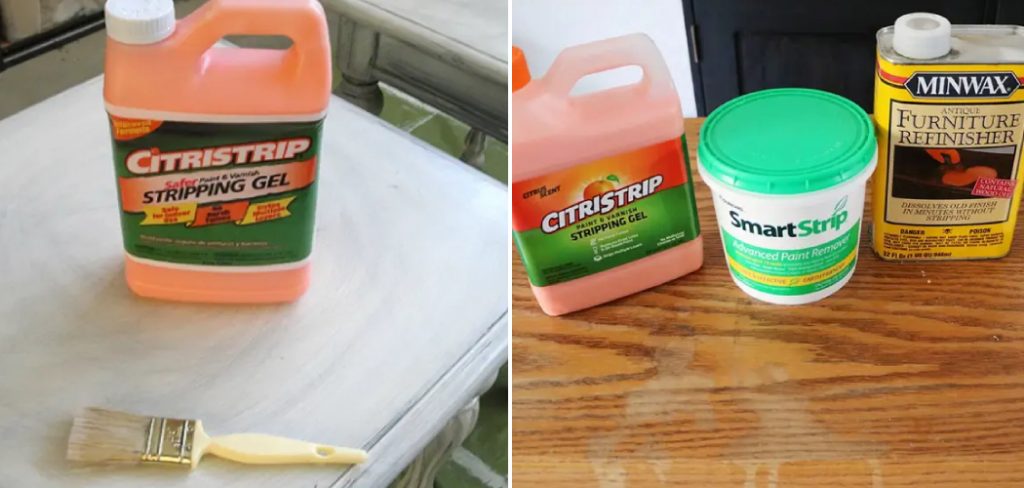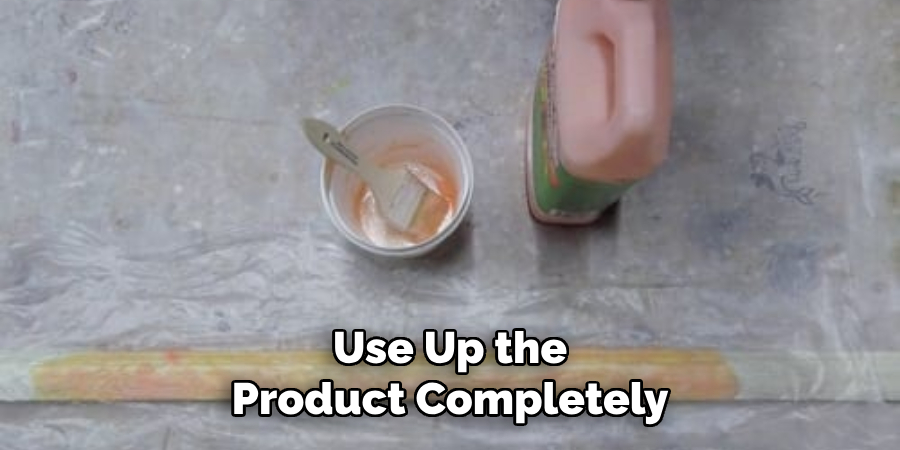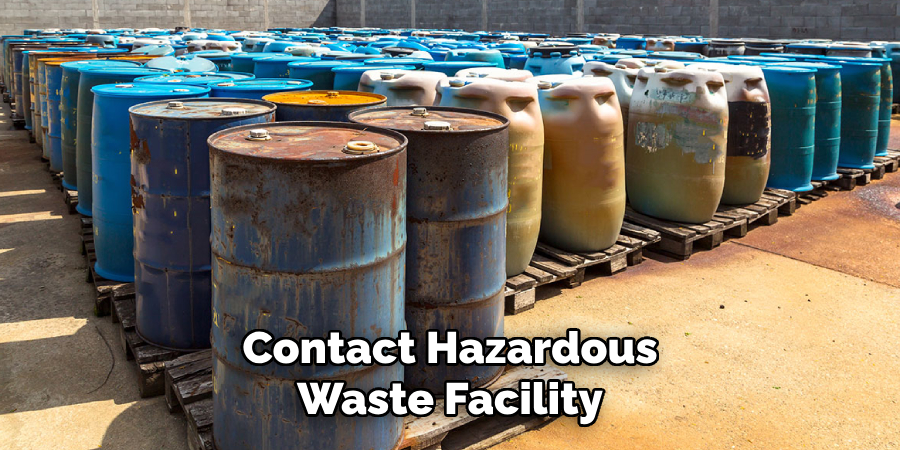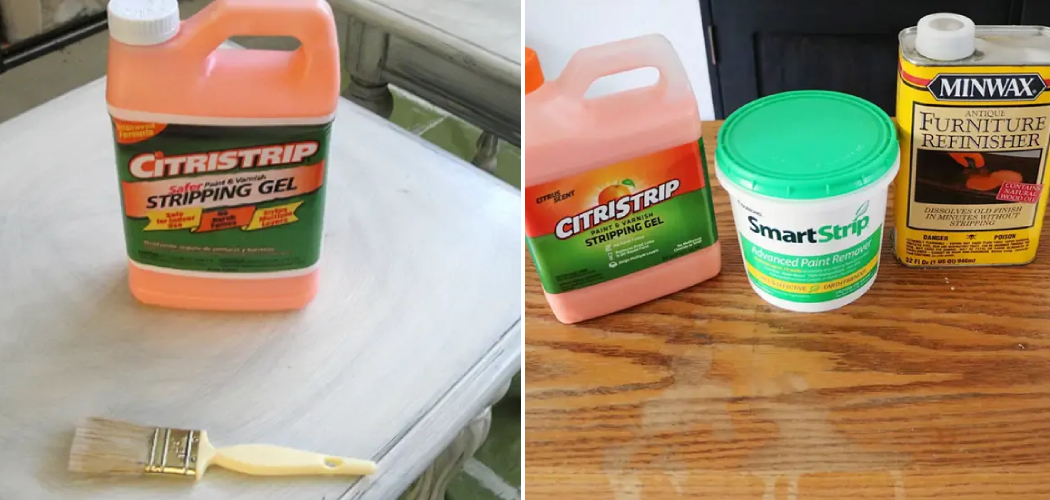Disposing of Citristrip, a popular paint stripping product, requires careful consideration due to its chemical composition. While Citristrip is marketed as a safer alternative to traditional paint strippers, it still contains active ingredients that can be harmful if not handled properly. Improper disposal can pose risks to human health and the environment.

Therefore, knowing to dispose of Citristrip safely and responsibly is crucial. From following local regulations and guidelines to understanding proper storage and disposal methods, there are several steps to ensure the environmentally friendly disposal of Citristrip. This article will provide a comprehensive guide on how to dispose of Citristrip properly, covering essential considerations, legal requirements, and eco-friendly disposal options. By following these guidelines, you can protect yourself, others, and the environment while responsibly disposing of Citristrip and other hazardous household chemicals.
Importance of Proper Disposal
Proper disposal of Citristrip is essential for several reasons.
Firstly, it ensures the safety and well-being of individuals handling the product. Citristrip contains chemicals that can cause skin and respiratory irritation, and improper handling can lead to accidental exposure or injuries.
Secondly, responsible disposal helps protect the environment. When hazardous chemicals are discarded carelessly, they can leach into soil and water systems, causing pollution and harming wildlife.
Thirdly, proper disposal complies with local regulations and guidelines, which are put in place to minimize public health risks and environmental impact. By adhering to these regulations, you contribute to a collective effort to maintain a cleaner and safer community.
Ultimately, taking the necessary steps for the safe disposal of Citristrip not only helps reduce potential hazards but also reinforces the importance of environmental stewardship and public safety.
10 Methods How to Dispose of Citristrip
1. Understanding Citristrip
Before discussing how to dispose of Citristrip, it’s essential to understand what it is and why it requires special handling. Citristrip is a popular brand of paint and varnish stripper that is known for its citrus scent and relatively low toxicity compared to traditional chemical strippers. However, despite being considered safer than many other paint strippers, Citristrip still contains chemicals that can be harmful if not handled properly. It’s important to follow safety precautions when using Citristrip and to dispose of it responsibly to protect both human health and the environment.

2. Read the Label
The first step in safely disposing of Citristrip is to read the product label carefully. The label provides important information about the ingredients, hazards, and proper disposal methods for the product. Pay attention to any specific instructions or warnings regarding disposal, as well as any recommended safety precautions for handling the product. Following the manufacturer’s guidelines will help ensure that you dispose of Citristrip safely and responsibly.
3. Store Unused Product Properly
If you have leftover Citristrip after completing your project, it’s essential to store it properly to prevent accidents and environmental contamination. Seal the container tightly to prevent spills or leaks, and store it in a cool, dry place away from heat sources and direct sunlight. Keep the product out of reach of children and pets to avoid accidental ingestion or exposure. If you plan to use the remaining Citristrip in the future, make sure to check the expiration date on the container to ensure its effectiveness.
4. Use Up the Product
One of the best ways to dispose of Citristrip is to use up the product completely on your project. By applying the Citristrip according to the manufacturer’s instructions and allowing it to work as intended, you can minimize the amount of leftover product that needs to be disposed of. Use a scraper or scrub brush to remove the softened paint or varnish, and then wipe the surface clean with a rag or paper towels. Dispose of any residue or waste materials according to local regulations, as some areas may have specific requirements for handling hazardous waste.

5. Neutralize the Residue
If you have leftover Citristrip residue or waste material that you need to dispose of, it’s essential to neutralize the chemicals to reduce their environmental impact. One way to do this is to mix the residue with an absorbent material such as kitty litter, sawdust, or shredded newspaper. This will help to solidify the residue and make it less likely to leak or spill during disposal. Once the residue is solidified, seal it in a sturdy plastic bag or container and dispose of it according to local regulations for hazardous waste.
6. Dispose of in Household Hazardous Waste Collection
Citristrip is considered a household hazardous waste due to its chemical composition, so it should not be disposed of in regular household trash. Instead, check with your local government or waste management authority to find out if they offer a household hazardous waste collection program. Many communities provide designated drop-off locations or scheduled collection events where residents can safely dispose of hazardous materials such as paint strippers, solvents, and other chemicals. Follow the instructions provided by your local authorities for packaging and transporting the Citristrip to the collection site.
7. Take to a Hazardous Waste Facility
If your community does not offer a household hazardous waste collection program, you may need to take the Citristrip to a designated hazardous waste facility for disposal. These facilities are equipped to handle a wide range of hazardous materials and ensure that they are disposed of safely and responsibly. Contact your local environmental agency or waste management authority for information on the nearest hazardous waste facility and their policies for dropping off materials. Be prepared to follow any specific instructions or requirements for packaging and transporting the Citristrip to the facility.

8. Dispose of in a Chemical Landfill
Another option for disposing of Citristrip is to take it to a chemical landfill or transfer station that accepts hazardous waste. These facilities are specially designed to handle hazardous materials and prevent contamination of the environment. Contact your local waste management authority or environmental agency for information on chemical landfill locations and their policies for accepting hazardous waste. Follow any guidelines provided for packaging and transporting the Citristrip to the landfill safely and legally.
9. Consider Recycling Options
In some cases, it may be possible to recycle certain components of Citristrip, such as the plastic container or metal lid. Check with your local recycling program to find out if they accept empty containers of paint strippers or other hazardous materials for recycling. If so, rinse out the container thoroughly to remove any remaining residue, and then dispose of it in the appropriate recycling bin. Recycling helps to reduce waste and conserve natural resources, so it’s worth exploring this option if available in your area.
10. Seek Professional Help
If you’re unsure how to dispose of Citristrip safely or if you have a large quantity of leftover product that you need to dispose of, consider seeking professional help. Environmental consulting firms, hazardous waste disposal companies, or local waste management authorities can provide guidance and assistance with proper disposal procedures. They can also help you navigate any legal or regulatory requirements for handling hazardous materials in your area. While professional disposal services may incur additional costs, they ensure that Citristrip is disposed of in compliance with environmental regulations and best practices.

Common Mistakes to Avoid
When using Citristrip, there are several common mistakes that can compromise the effectiveness of the product or even pose safety risks. Here are some key pitfalls to be aware of:
- Skipping the Patch Test: Before applying Citristrip to a large surface, always perform a patch test on a small, inconspicuous area. This helps ensure that the product won’t damage or discolor the material.
- Ignoring Safety Gear: Failing to wear appropriate safety gear, such as gloves, goggles, and a mask, can lead to skin irritation or respiratory issues. Always protect yourself when working with any chemical product.
- Poor Ventilation: Using Citristrip in a poorly ventilated area can cause the buildup of harmful fumes. Always work in a well-ventilated space or use fans to improve air circulation.
- Improper Application: Applying Citristrip too thinly or unevenly can reduce its effectiveness. Make sure to apply a generous, even layer according to the manufacturer’s instructions.
- Rushing the Process: Impatience can lead to inadequate paint or varnish removal. Allow Citristrip the recommended amount of time to work before attempting to scrape off the material.
- Incorrect Disposal: Disposing of Citristrip and its residue improperly can harm the environment. Always follow local regulations for hazardous waste disposal to ensure safe and legal handling.
- Storing Unsealed Product: Leaving the container open can result in spills, leaks, or reduced product efficacy. Always seal the container tightly after use and store it properly.
Avoiding these common mistakes will help ensure that you use Citristrip effectively and safely, achieving the best results for your project while minimizing any risks.
Conclusion
Proper disposal of Citristrip is crucial to ensuring the safety of both people and the environment. By following the steps outlined above, you can responsibly manage any leftover product, residues, or waste materials. Whether you are neutralizing the chemicals, utilizing local hazardous waste collection programs, or seeking professional disposal services, each method plays an essential role in minimizing environmental impact. Always prioritize safety and adhere to local regulations to contribute to a healthier, more sustainable environment. Through careful disposal practices, we can all play a part in protecting our communities and natural resources.
